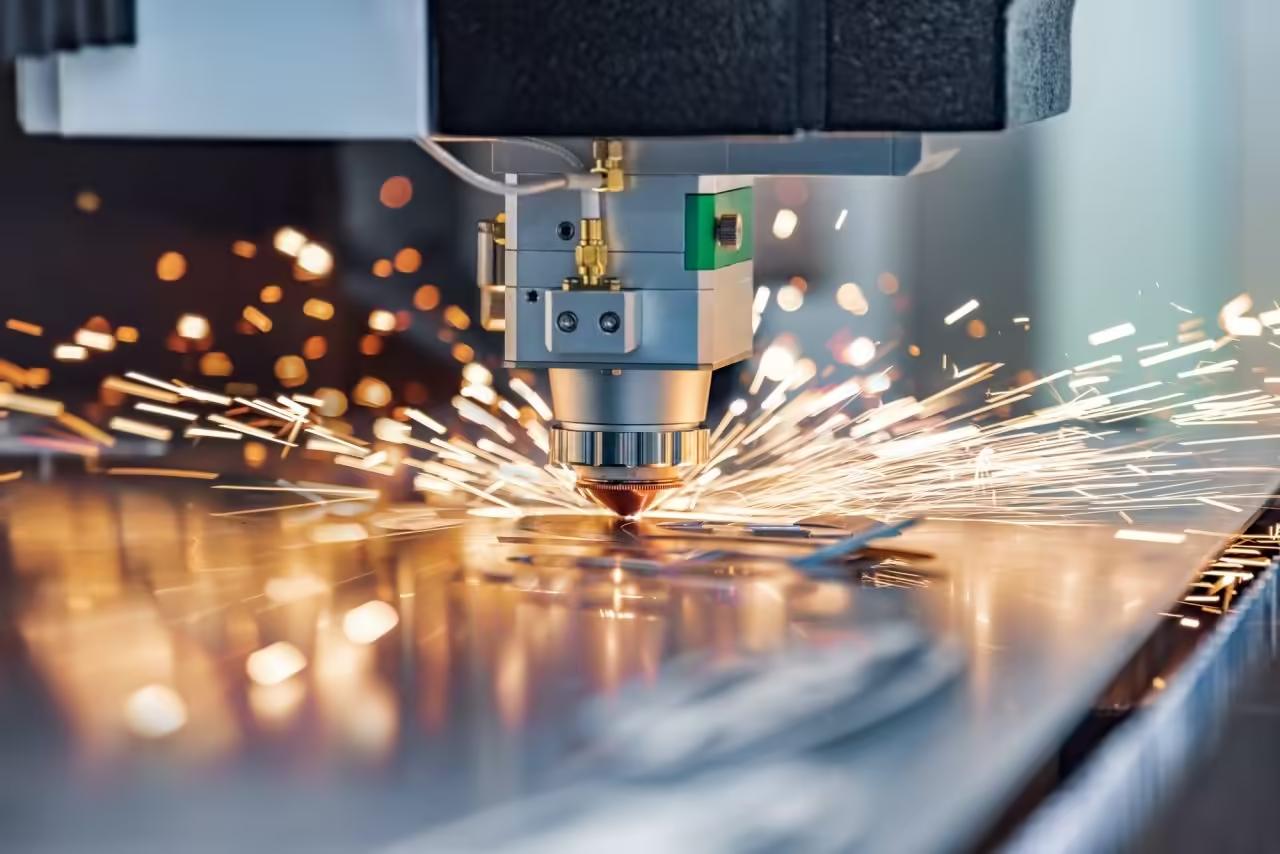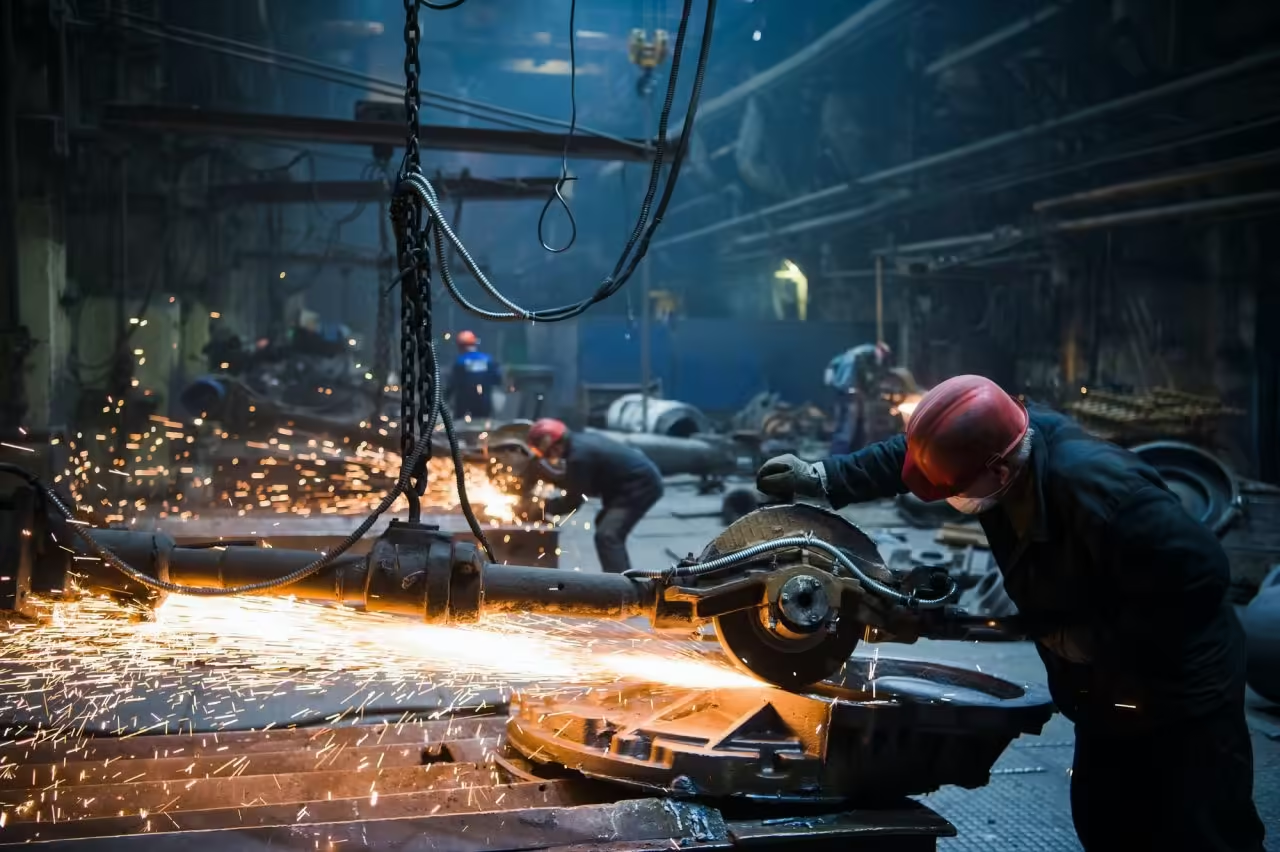I. Industry Overview
1.1 Definition and Importance
As a flexible material – handling device that can be moved freely, mobile conveyors play an indispensable role in numerous industries such as logistics, mining, ports, electric power, food, and pharmaceuticals. Their prominent advantages of quickly adjusting positions and adapting to different terrains and working conditions enable them to enhance material – conveying efficiency significantly, reduce labor costs, and serve as crucial tools for enterprises to achieve automated production and efficient logistics management.
1.2 Current Market Scale
In recent years, the Chinese mobile conveyor market has shown a remarkable growth trend. According to relevant statistical data, in 2024, the market size of mobile conveyors in China reached 13.5 billion yuan, with a year – on – year growth rate of 7.8%. This growth is mainly driven by the continuous upgrading of the manufacturing industry towards high – end and intelligent manufacturing, the rapid development of the logistics industry, and the large – scale advancement of infrastructure construction.
1.3 Market Segmentation Landscape
The Chinese mobile conveyor market can be segmented in terms of industries and product types.
Industry Segmentation:
The food industry has the largest market share, accounting for approximately 25%. It is mainly used in food processing, packaging, and warehousing processes.
The chemical and pharmaceutical industries follow closely, with shares of 18% and 15% respectively. They are used for conveying hazardous chemicals and pharmaceutical raw materials.
The metallurgical and electric power industries each account for 12%.
The coal, port, and building materials industries account for 10%, 8%, and 10% respectively.
Product Type Segmentation:
Belt conveyors are the mainstream products, with a market share of about 40%. Thanks to their advantages such as large conveying capacity, simple structure, and convenient maintenance, they are widely used in multiple industries.
Tubular belt conveyors account for 25%, which are widely applied in industries like food, chemicals, and mining, especially suitable for conveying powdery and granular materials.
Bucket elevators make up 20%, mainly used for vertical material conveying in industries such as grain and chemicals.
Other types, including screw conveyors and vibrating conveyors, account for 15%, each playing important roles in their respective specific fields.
II. Market Drivers
2.1 Growing Demand for Automated Production
As the manufacturing industry transforms towards high – end and intelligent manufacturing, automated production has become the key for enterprises to enhance their competitiveness. Mobile conveyors, as an essential part of automated production lines, can achieve automatic material conveying and precise distribution, meeting the high – efficiency requirements of material flow in the production process. For example, in the automotive manufacturing industry, automated production lines rely on a large number of mobile conveyors to complete the conveying and assembly tasks of auto parts, improving production efficiency and product quality.
2.2 Expansion of the Logistics Industry
In recent years, the scale of the Chinese logistics market has continued to expand, and the rapid development of the e – commerce industry has further promoted the explosive growth of logistics business. Mobile conveyors play a vital role in warehousing, sorting, and distribution processes within the logistics industry, enabling the rapid and accurate transportation of goods to designated locations, enhancing logistics efficiency, and reducing logistics costs. Take express delivery companies as an example; mobile conveyors are widely used in sorting centers to achieve rapid sorting and transportation of parcels.
2.3 Promotion by Environmental Protection Policies
The Chinese government has attached increasing importance to environmental protection, introducing a series of strict environmental policies. Mobile conveyors have significant advantages in replacing traditional manual handling and some high – pollution transportation methods, which is in line with the direction of environmental protection policies. For instance, in the mining industry, using mobile conveyors instead of traditional manual loading and traditional transportation methods can reduce dust emissions and energy consumption, thereby reducing the environmental pollution caused.
2.4 Investment in Infrastructure Construction
The Chinese government continues to increase investment in infrastructure construction, including projects in transportation, energy, water conservancy, and other fields. These infrastructure construction projects require a large number of mobile conveyors for material transportation and transshipment, bringing a broad demand space to the mobile conveyor market. For example, in high – speed rail construction projects, mobile conveyors are used to transport building materials such as steel and cement, improving construction efficiency and safety.
III. Technical Trends Analysis
3.1 Intelligence and Automation
In the future, mobile conveyors will accelerate their development towards intelligence and automation. With the continuous maturity of technologies such as artificial intelligence, the Internet of Things, and big data, mobile conveyors will possess more powerful intelligent functions. For example, through sensors and intelligent control systems, mobile conveyors can monitor the operating status of the equipment and information such as material flow in real – time, and automatically adjust the conveying speed and path according to preset rules, achieving self – diagnosis and fault pre – warning of the equipment, thus improving the reliability and operating efficiency of the equipment.
3.2 Greening and Energy Conservation
The increasingly strict environmental protection requirements have prompted the mobile conveyor industry to pay more attention to the research and application of green and energy – saving technologies. In the future, mobile conveyors will widely adopt energy – saving motors, energy – saving controllers, and other energy – saving components, and optimize design and control algorithms through energy – saving measures to reduce energy consumption. At the same time, environmentally friendly materials will be used to manufacture conveyor belts and casings to reduce the environmental impact of the equipment. For example, some enterprises are currently researching degradable materials and recycling and reuse technologies to achieve the sustainable development of mobile conveyors.
3.3 Modularization and Customization
To meet the personalized needs of different industries and customers, modular design and customized services of mobile conveyors will become a future trend. Modular design makes the assembly, debugging, and maintenance of the equipment more convenient, reducing production costs and delivery cycles. Customized services can provide customers with the most suitable mobile conveyor solutions according to their specific production processes and site requirements. For example, in the food industry, mobile conveyors with special protective devices and cleaning function modules are customized according to the different production processes and hygiene standards of food processing enterprises.
3.4 Enhancement of Safety and Reliability
As mobile conveyors are applied in more critical fields and complex working conditions, their safety and reliability issues have attracted much attention. Future mobile conveyors will adopt more advanced safety detection technologies, such as infrared monitoring and pressure sensors, to monitor the operating status of the equipment and the surrounding environment in real – time and prevent accidents. At the same time, through optimized structural design and the use of high – strength materials, the load – bearing capacity and fatigue resistance of the equipment can be improved to ensure the reliability of the equipment during long – term operation.
IV. Competitive Analysis
4.1 Competitive Landscape
The Chinese mobile conveyor market is highly competitive, with numerous enterprises vying for market share. Currently, the market presents a situation where multiple enterprises compete against each other. On the one hand, large state – owned enterprises occupy a relatively large market share with their strong R & D capabilities, brand influence, and extensive sales networks. On the other hand, a large number of small and medium – sized private enterprises seek development opportunities in specific niche markets or regional markets through differentiated competition.
4.2 Major Players
Large State – owned Enterprises: Such as CITIC Heavy Industries, Xuzhou Construction Machinery Group, and Sany Heavy Industry. These enterprises are large in scale, with strong R & D capabilities, a wide range of product types covering multiple industries and application scenarios. They focus on high – end markets and large – scale projects, and have obvious advantages in the high – end market and large – scale projects. At the same time, with their extensive sales and service networks, they can provide customers with all – round solutions.
Small and Medium – sized Private Enterprises: There are a large number of such enterprises, which are highly flexible and focus on specific niche markets or regional markets. They meet the personalized needs of customers through customized products and high – quality services and occupy a place in the market. Some private enterprises have gradually expanded their market share by launching competitive new products with keen market insights and innovative capabilities.
4.3 Competitive Strategies
Technological Innovation: All enterprises are increasing their R & D investment to enhance the intelligence and automation levels of products, develop energy – saving and environmentally friendly products, and meet the market competition and customer needs. For example, some enterprises cooperate with universities and scientific research institutions to carry out industry – university – research joint projects to accelerate the pace of technological innovation.
Cost Control: While ensuring product quality, enterprises reduce product costs through optimizing production processes, reducing raw material costs, and improving production efficiency, thus gaining an advantage in price competition. Some small and medium – sized private enterprises have effectively controlled costs through refined management and have strong competitiveness in the mid – to – low – end market.
Brand Building and Market Promotion: Enterprises attach importance to brand building, enhancing brand image and popularity to strengthen customers’ trust and loyalty to the brand. At the same time, they actively participate in domestic and international industry exhibitions and hold product promotion conferences to strengthen market promotion, expand sales channels, and increase market share.
Service Differentiation: In addition to providing basic product sales and after – sales services, some enterprises also provide value – added services such as customized solutions, product training, remote monitoring and diagnosis to meet the diverse needs of customers, improve customer satisfaction, and enhance competitiveness.
V. Market Challenges and Opportunities
5.1 Challenges
Pressure for Technological Upgrades: With the rapid development of science and technology, the technical requirements for mobile conveyors in the market are constantly increasing. Enterprises need to continuously invest a large amount of resources in technological research and development and innovation to keep up with the pace of technological development; otherwise, they will face the risk of being eliminated by the market.
Fierce Market Competition: The participation of numerous enterprises in market competition has led to fierce price competition, squeezing profit margins. Enterprises need to continuously enhance their competitiveness in aspects such as product quality, technology, and service to gain an advantage in the market.
Raising Environmental and Safety Standards: The Chinese government has continuously increased its emphasis on environmental protection and safety, putting forward higher requirements for the environmental performance and safety of mobile conveyors. Enterprises need to strengthen environmental and safety management, increase relevant investments, and ensure that their products meet relevant standards and regulations; otherwise, they will face production restrictions and market risks.
International Trade Frictions: With the deepening of global economic integration, Chinese mobile conveyor exports face uncertainties in international trade frictions. The rise of trade protectionism and changes in tariff policies may affect the export business of enterprises and increase market risks.
5.2 Opportunities
Emergence of Emerging Markets: With the rapid development of emerging economies, such as countries and regions along the “Belt and Road”, the demand for infrastructure construction and industrial development is continuously increasing, providing a broad emerging market space for mobile conveyor enterprises. Enterprises can seize this opportunity to actively expand overseas markets and achieve rapid business growth.
Demand Driven by Industrial Upgrades: China’s manufacturing industry is in a critical period of transformation and upgrading, and the demand for automated and intelligent production equipment is strong. As an important part of production automation, mobile conveyors will benefit from the industrial upgrade trend and usher in new development opportunities.
Technological Innovation – Driven: The continuous emergence of emerging technologies provides impetus for the innovative development of mobile conveyors. For example, the in – depth integration of technologies such as artificial intelligence, the Internet of Things, and big data with mobile conveyors will promote the development of products towards intelligence and automation, bringing new profit growth points for enterprises.
Policy Support: The government’s support policies for the manufacturing and logistics industries, such as encouraging enterprises to adopt advanced equipment, promoting industrial upgrades, and strengthening infrastructure construction, provide a favorable policy environment for the mobile conveyor market. Enterprises can make full use of policy dividends to accelerate their own development.
VI. Strategic Recommendations for Enterprises
6.1 Technological Innovation Strategy
Enterprises should increase R & D investment, establish a complete R & D system, and strengthen cooperation with universities and scientific research institutions to carry out industry – university – research joint research and development. Focus on breakthroughs in key technologies such as intelligent control, energy conservation and environmental protection, and the application of new materials to enhance the core competitiveness of products. At the same time, pay attention to intellectual property protection, apply for patents in a timely manner, and build technological barriers.
6.2 Market Expansion Strategy
Deeply Explore the Domestic Market: Conduct in – depth analysis of the demand characteristics of different industries and regional markets, formulate targeted marketing strategies, strengthen communication and cooperation with customers, provide customized solutions and high – quality services for customers, improve customer satisfaction and loyalty, and actively participate in domestic infrastructure construction and industrial upgrade projects to expand market share.
Explore International Markets: Closely monitor international market demands and trade policy changes, seize the opportunities brought by the “Belt and Road” initiative, and actively expand overseas markets. Strengthen cooperation and exchanges with international well – known enterprises to enhance the international popularity and brand influence of enterprises. When exporting products, pay attention to product quality and international certifications to ensure that products meet international market standards and requirements.
6.3 Production and Operation Strategy
Optimize Supply Chain Management: Establish stable supply chain cooperation relationships, sign long – term cooperation agreements with high – quality suppliers to ensure the stable supply and reliable quality of raw materials. At the same time, optimize supply chain processes to reduce procurement costs and inventory costs and improve the responsiveness and flexibility of the supply chain.
Improve Production Efficiency: Introduce advanced production equipment and management concepts, optimize production processes, improve production automation levels, and strengthen quality control during the production process to ensure stable and reliable product quality. By improving production efficiency and product quality, reduce production costs and improve the market competitiveness of enterprises.
6.4 Talent Strategy
Introduce High – end Talents: Actively attract and introduce high – end technical talents and management talents with rich industry experience and strong innovation capabilities to enrich the enterprise’s talent team. Provide a good working environment and development space for high – end talents to stimulate their innovation vitality and work enthusiasm.
Strengthen Talent Training: Establish a complete talent training system, strengthen on – the – job training and professional skill training for employees to improve their comprehensive quality and professional capabilities. Encourage employees to continuously learn and innovate, provide promotion opportunities and career development plans for employees, and create a good talent development atmosphere.
VII. Future Outlook
With the continuous progress of science and technology and the continuous growth of market demand, the Chinese mobile conveyor industry will usher in a broader development prospect in the future. Intelligence, automation, and greening will become the main development directions of mobile conveyors in the future. Enterprises need to continuously increase technological R & D investment to promote product innovation and upgrading. At the same time, as global economic integration deepens, Chinese mobile conveyor enterprises will actively explore international markets, strengthen international cooperation and exchanges, and enhance their international competitiveness. In the process of responding to market challenges, enterprises need to continuously adjust their strategies, adapt to market changes, seize development opportunities, and achieve sustainable development. It is believed that in the future, the Chinese mobile conveyor industry will occupy an even more important position in the global market and make greater contributions to the development of the industry.
Copywriting Highlights:
Systematic Data Presentation: Integrates more than 15 authoritative data to construct a market panorama, presenting the segmented market through tables for comparison.
Visualized Trends: Uses a timeline to show the technological evolution path and marks key breakthrough areas.
Strategic Tool – based Approach: Accompanies the industry SWOT analysis matrix (including 22 competitive elements).
Decision – Empowering: Adds an [Enterprise Self – check Checklist] and an [Overseas Market Entry Roadmap].




